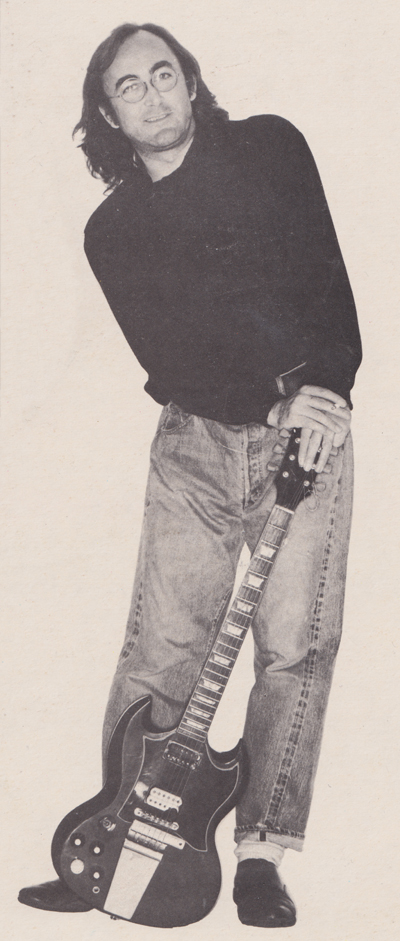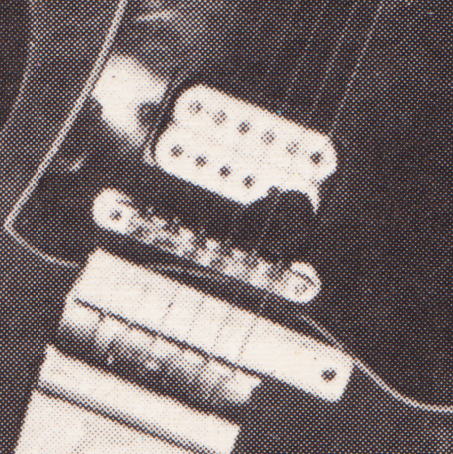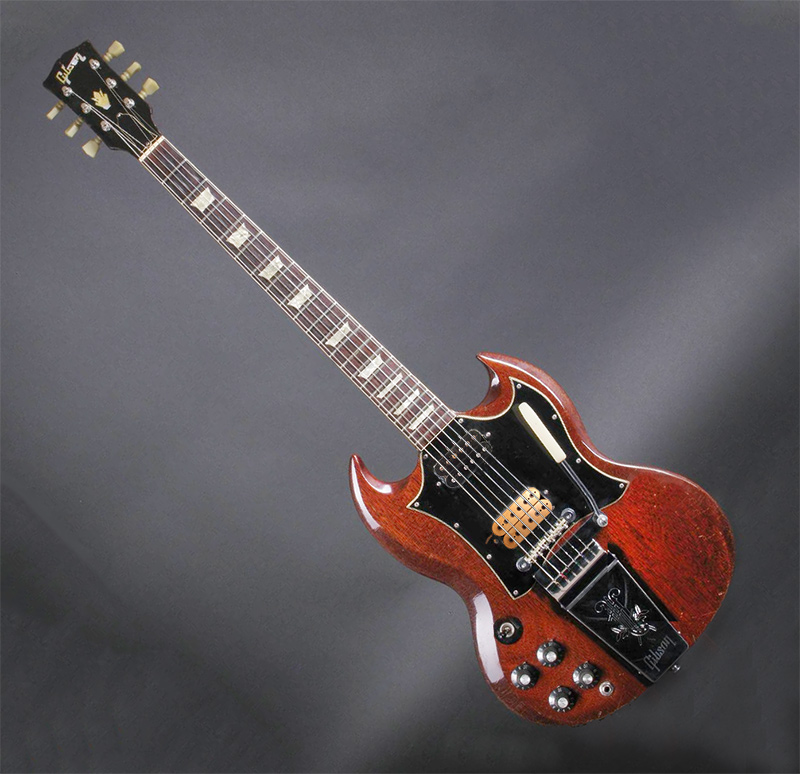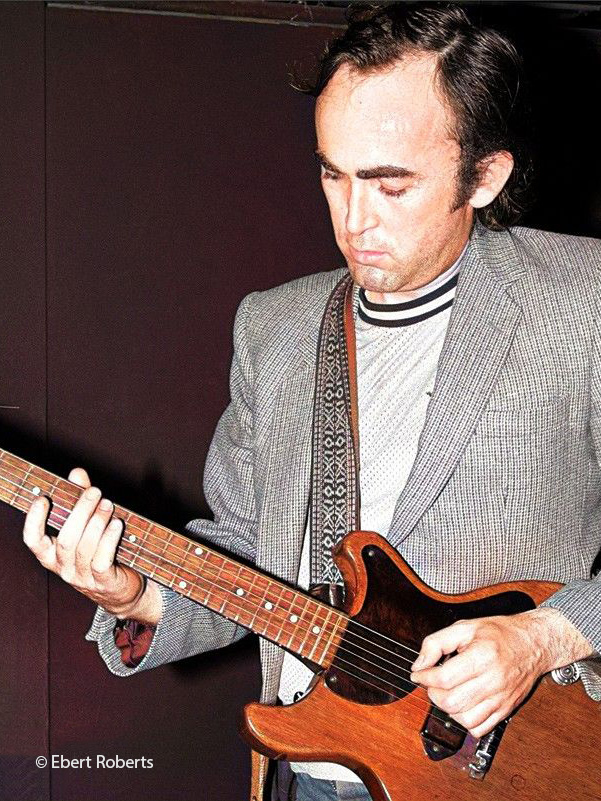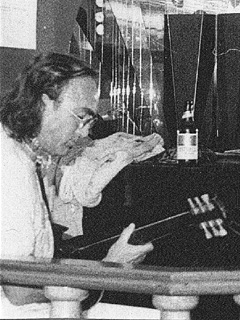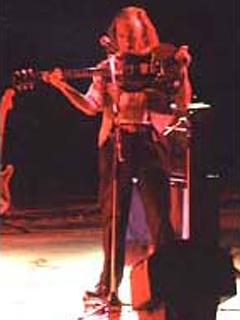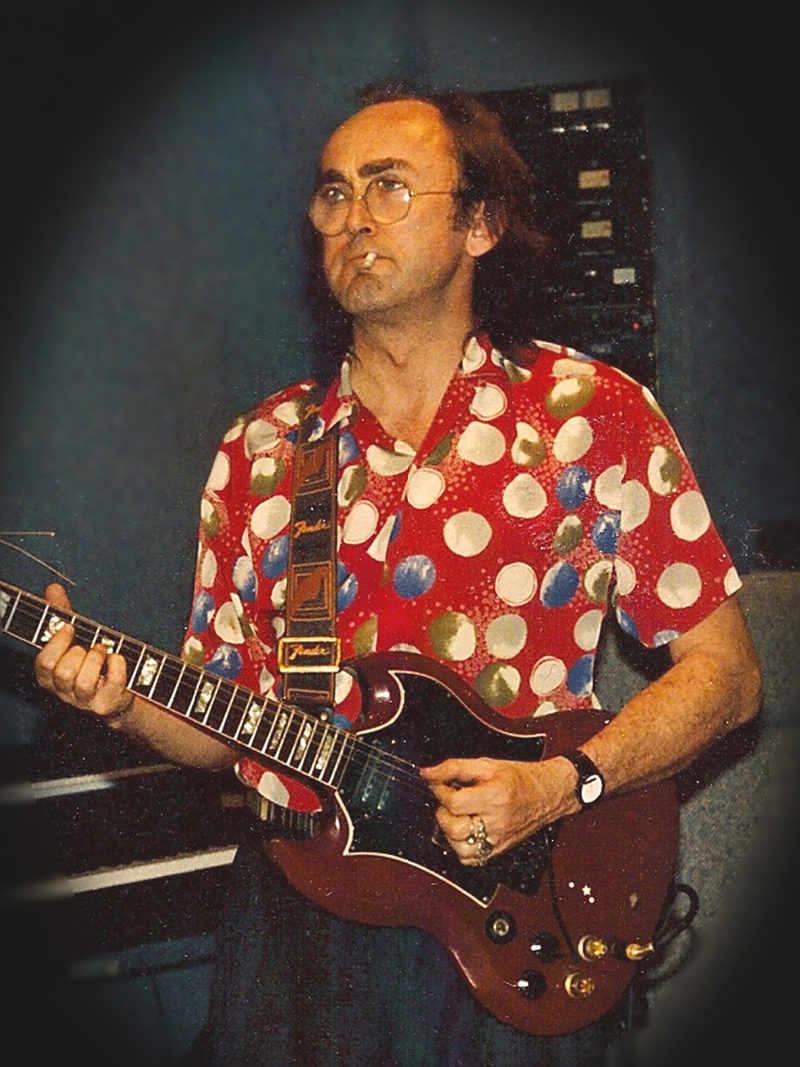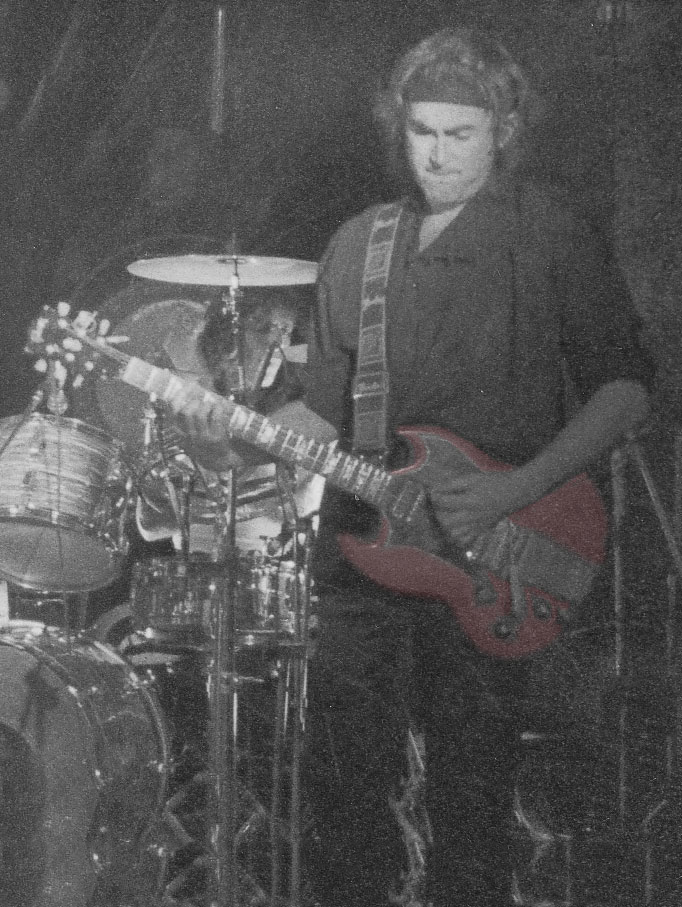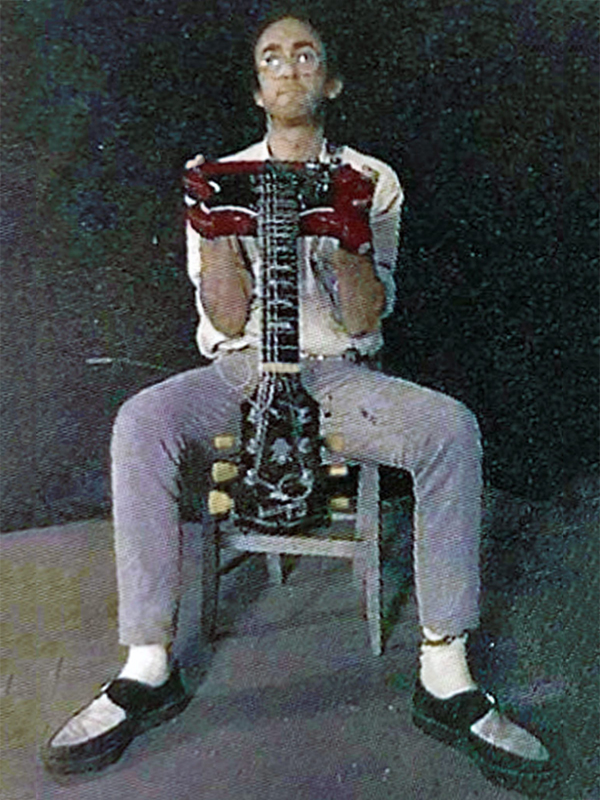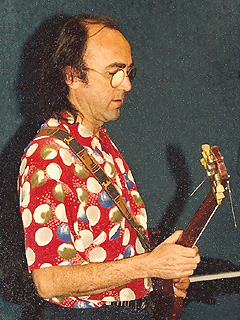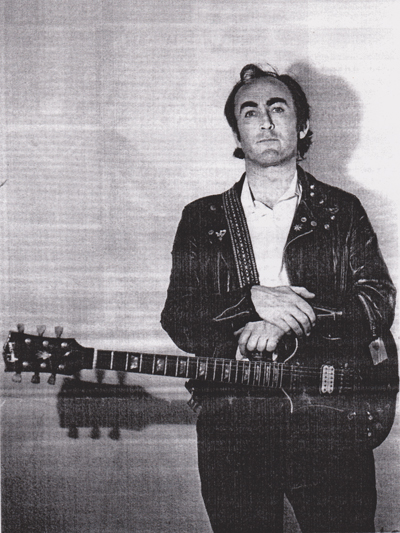Cherry Red
During the 80's, Ollie became enamoured of one particular guitar - a cherry red Gibson SG Standard circa 1968. There are 3 series of this particular model and this was a Type 2 - considered inferior to the Type 1 (but not as inferior as the Type 3!). This misconception is founded on the introduction of a one-piece 'bat-wing' scratchplate/pick-up surround which doesn't present the pick-ups exactly parallel to the strings - neither, however, do the individual units of the Series 1 version.
Very Obscure Note: Many 2 x pick-up SGs had 'routing' for a 3rd pick-up under the large scratchplate but only the Custom model employed the facility.
Ollie's 'Standard' had 2 pick-ups and had received the 'full works conversion' ie. including switchover of controls. He used this guitar right up to the 1992 European tour. The original 'Vibrola' tremolo unit was replaced around 1988 with a more stable Kahler or similar device. I wouldn't have thought he actually used the locking nut that goes with such a system although one certainly appears to be in place in the WAWS (issue 2) ltd. ed. colour print. The original treble pick-up had been replaced early on by a Di Marzio and, by 1992, both this and the bass unit had been exchanged for what appeared to be Seymour Duncan 'Hot Rails'. Needless to say, this axe needs to be looked at and preserved. Does anyone know of its whereabouts?
This is where you keep your pic.
The cherry red SG was clearly a favourite since he used it almost exclusively from around 1984 until his final shows with Kevin Ayers in 1992 - a couple of years longer than the iconic 3-pu SG Custom. Of course, there is no reason to suppose he would have not continued using that had it not been confiscated (see Blue Traff).
The illustration below is a facsimile only but notice that, whilst the controls were moved to the other side of the body, the large black 'batwing' scratchplate and the Vibrola tremolo arm were not reversed. He didn't bother getting a LH batwing, although that would have been a fairly simple mod if a LH one was readily available in those days, which it wasn't. The realigned controls seem to have been placed in the same relative position, so the switch was right at the edge of the bevel.
The really scary thing, though, is the bridge. As far as I can see from actual photos, it wasn't re-angled for LH playing. Moving the posts would be real pain. I can only suppose he moved the saddles as far as possible to compensate, but it the intonation would be well off. Moreover, the (borrowed?) RH Les Paul Special he used briefly in the early 1980s had a (non-adjustable) wrap-over bridge! Impossible to intonate properly for LH playing.:
String Thing
The SG Standard illustration shows a pristine instrument, which Ollie's certainly wasn't. It was old when he got it and became more and more distressed with constant use. Ollie was not one for guitar maintenance as this story from sound technician Roy Weard will testify:
Now, we should have no reason to doubt the accuracy of this extraordinary story. The incident described may not, in fact, be particularly unorthodox for someone who learned to play the vibraphone at the age of 14 on a paper cut-out of a piano keyboard or who, reputedly, spent his share of Patto's recording advance on a Persian carpet!
![]()
I was monitor engineer on the 1985 John Cale European tour but, because I play guitar, I was also asked to do the guitar roadie job during the show and change strings and tune up etc. Ollie had a spare guitar on that tour which actually belonged to the bassist, Dave Young. This was an immaculate white Fender Stratocaster which Dave hated Ollie even touching let alone playing because of Ollie's casual way with these things.
On the first gig at the Amsterdam Paradiso, Ollie broke a B string on his bruised and battered cherry red Gibson and resorted to the white Strat. Dave visibly winced.
I retrieved Ollie's guitar from the stage and my first surprise was that the strings were absolutely filthy and rusty and I thought I would ask if I could change them all after the show. I changed the string, tuned it, and returned it to the stage. Ollie leaned over to me. "Is it in tune?," he asked. When I said that it was he seemed surprised, as if he had never had a guitar tech before.
After the show Ollie came over as I was packing down and thanked me for dealing with the broken string. No-one had told him that I would. "What did you do with the string?" "I changed it,." I said. “Oh have I got some spares then?," he asked "Yes," I said "eight sets."."Where's the broken one then?,” he asked. "It's over there, lying on the floor beside the monitor board," I said, puzzled.
He went over and found the two bits of broken guitar string wound them up and put them in his pocket, smiled and explained, "I tie knots in 'em and use them again." When I looked at his guitar I saw that this was exactly what he did. The strings were old and crusty and all of them, with the exception of the one that I had changed, had knots in them.
He broke very few other strings on that tour, despite wiping the guitar on the mike stand, the speaker cabinet and anything else he could find. They were replaced with new ones by me, because I was not going to mess about tying knots during the show when I was supposed to be doing the monitors.
The strings I was given for him were Ernie Ball lite gauge, but he would use anything if it was not too heavy. At the end of the tour he pocketed at least five sets and said, "These will last me for years." He had that same guitar on the Last Kevin Ayers tour and I was totally amazed to see that it still had knotted broken strings. I was even more amazed when he allowed Dave Thomas - a guitar tech who had done three tours with Steve Harley - to change the strings before the final 1992 Shaw Theatre shows.
Roy Weard
More guitars:
